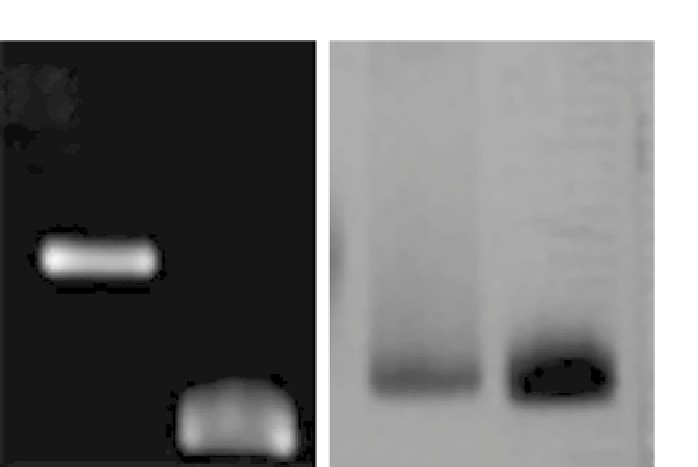Biomedical Engineering Reference
In-Depth Information
(A)
(B)
FIGURE 5.6
Agarose gel electrophoresis of (A) QD with (right) and without antibody (left) and
(B) IOMNP with (left) and without antibody (right) covalent conjugated antibody.
Courtesy of Ocean
NanoTech. (For color version of this figure, the reader is referred to the online version of this topic)
number of proteins or biomolecules per NM. The higher the number of bio-
molecules attached to the NM, the slower the rate of migration. It is usually
observed that tailing occurs in all types of NMs after bioconjugation.
5.5.2 Peptides
Although antibodies have very high target selectivity and binding affinities, they
are potentially immunogenic. To overcome such a drawback, antibodies may be
engineered to acquire humanized or chimeric properties to avoid immune detec-
tion. In addition, antibody production and isolation are difficult and tedious.
Alternative targeting molecules such as peptides, aptamers, and some small
molecules have been identified.
Compared with antibodies, peptides as targeting moieties offer several
advantages, such as lack of immunogenicity and lower cost of production.
However, they have lower target affinities, increased chance of nonspecific
binding, and an increased probability of proteolytic cleavage. A few of these
issues may be improved by displaying the peptides multivalently to increase
the effective binding affinity and by using D-amino acids which evade pro-
teolysis. Peptide-based targeting ligands are identified from the binding
regions of proteins for the target of interest. They can also be produced using
phage display which is a technique utilized for efficient and rapid screening
of peptides possessing specific binding to targets of interest.
73
This method
uses bacteriophage, viruses that only infect bacteria, and are genetically

